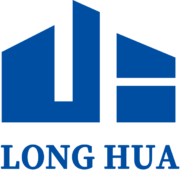
In the traditional manufacturing industry to ‘industry 4.0’ transformation wave, laser welding technology because of its high precision, high efficiency features, has become the core process of automotive, electronics, aerospace and other fields. However, with the increase in product complexity and the outbreak of personalised demand, traditional laser welding is faced with difficult process debugging, quality fluctuations, artificial dependence and other pain points.
The deep integration of AI technology is promoting laser welding from ‘single equipment’ to ‘intelligent welding one-stop solution’, achieving the optimisation of the whole process from processing to testing.
First, how does AI empower laser welding?
1. Intelligent process optimisation
Adaptive parameter adjustment
AI automatically adjusts parameters such as power, speed, and defocusing amount through real-time monitoring of weld morphology and molten pool dynamics, solving the problem of high trial-and-error cost in traditional welding.
Material database learning
Based on massive welding data (e.g. stainless steel, aluminium alloy, copper, etc.), AI can predict the optimal welding parameters for different materials, reducing the reliance on manual experience.
2. Real-time quality inspection
Visual + spectral dual monitoring
High-speed camera captures weld surface defects (porosity, cracks)
Plasma spectral analysis to determine whether the depth of fusion is up to standard or not
Precision: defect recognition rate > 99.5% (traditional manual inspection only 85%)
AI judgement system
Automatically classify defective welding products, and feedback to the production side to adjust the parameters, to achieve ‘detection – correction’ closed loop.
3. Predictive maintenance
Through vibration, temperature, laser power and other sensor data, AI early warning of optical lens aging, guide rail wear and other problems, equipment downtime reduced by 60%.
Third, the industry impact and future trends
1. Efficiency Improvement
Welding speed increased by 30-50%, the yield rate increased to 99.9%.
Reduce manpower cost by 70% (1 AI equipment instead of 3 senior welders)
2. New Business Models
Cloud welding service: upload CAD drawings remotely, AI automatically generates welding procedures
Payment by results: dynamic billing based on welding quality data
3. Technology integration direction
Digital twin: virtual debugging of welding parameters, then synchronised to physical equipment
Quantum sensing: nanoscale stress monitoring of weld seams.
Conclusion: AI redefines the laser welding value chain.
From ‘single processing tool’ to ‘full-process intelligent service’, AI-enabled laser welding solutions are shortening the R&D cycle, lowering the comprehensive cost and improving the process limit. For manufacturing enterprises, embracing this technological change will be the key to winning the competition in high-precision and flexible production.

